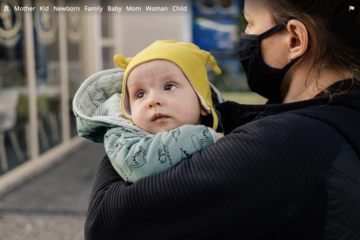We found 240 results that contain "deleting a region of dna or adding a new segment"
Posted on: #iteachmsu

The Role of Nonclassroom Spaces in Living-Learning ... - ERIC
The coronavirus pandemic continues to hit the US economy, with another 5.2 million Amercians seeking unemployment benefits last week.
More than 20 million Americans have applied for benefits in the last month.
Economists believe that the U.S. economy contracted at its sharpest rate since World War II in the first quarter of the year.
Another 5.2 million more Americans sought unemployment benefits last week, lifting total filings for claims over the past month above an astounding 20 million, which would underscore the deepening economic slump caused by the novel coronavirus outbreak.
More than 20 million Americans have applied for benefits in the last month.
Economists believe that the U.S. economy contracted at its sharpest rate since World War II in the first quarter of the year.
Another 5.2 million more Americans sought unemployment benefits last week, lifting total filings for claims over the past month above an astounding 20 million, which would underscore the deepening economic slump caused by the novel coronavirus outbreak.
Posted by:
Chathuri Hewapathirana

Posted on: #iteachmsu

An Overview of the Syllabus and its Role at MSU
What a syllabus is
A syllabus is a synecdoche for a course of study—a part of the curricular experience that represents the whole. They are often the very first course texts our students encounter and, accordingly, they frame and preface learning in powerful ways. On one hand, they communicate practical and structural details—where and when a course meets, what to read, and how to contact an instructor. But they also express intellectual and discipline-specific expectations.
As a special genre of educational texts, syllabi have taken various forms and played various roles over many centuries. In the 17th century ‘syllabus’ was synonymous with ‘table’ or ‘index.’ They served as a structural preview for manuscripts or a list of speakers and topics for a lecture series—they were a means of organizing texts, ideas, and experience. Although that core function remains, post-secondary syllabi have expanded significantly in volume and purview over the past forty years.
A syllabus is a synecdoche for a course of study—a part of the curricular experience that represents the whole. They are often the very first course texts our students encounter and, accordingly, they frame and preface learning in powerful ways. On one hand, they communicate practical and structural details—where and when a course meets, what to read, and how to contact an instructor. But they also express intellectual and discipline-specific expectations.
As a special genre of educational texts, syllabi have taken various forms and played various roles over many centuries. In the 17th century ‘syllabus’ was synonymous with ‘table’ or ‘index.’ They served as a structural preview for manuscripts or a list of speakers and topics for a lecture series—they were a means of organizing texts, ideas, and experience. Although that core function remains, post-secondary syllabi have expanded significantly in volume and purview over the past forty years.
Posted by:
Super Admin

Posted on: #iteachmsu

DISCIPLINARY CONTENT
Article : internationally recognized certificate serves as proof of performance, strengthening both
https://www.bankrate.com/investing/stock-market-basics-for-beginners/Software testing is governed by seven principles:Absence of errors fallacy: Even if the software is 99% bug-free, it is unusable if it does not conform to the user's requirements. Software needs to be bug-free 99% of the time, and it must also meet all customer requirements.Testing shows the presence of errors: Testing can verify the presence of defects in software, but it cannot guarantee that the software is defect-free. Testing can minimize the number of defects, but it can't remove them all.Exhaustive testing is not possible: The software cannot be tested exhaustively, which means all possible test cases cannot be covered. Testing can only be done with a select few test cases, and it's assumed that the software will produce the right output in all cases. Taking the software through every test case will cost more, take more effort, etc., which makes it impractical.Defect clustering: The majority of defects are typically found in a small number of modules in a project. According to the Pareto Principle, 80% of software defects arise from 20% of modules.Pesticide Paradox: It is impossible to find new bugs by re-running the same test cases over and over again. Thus, updating or adding new test cases is necessary in order to find new bugs.Early testing: Early testing is crucial to finding the defect in the software. In the early stages of SDLC, defects will be detected more easily and at a lower cost. Software testing should start at the initial phase of software development, which is the requirement analysis phase.Testing is context-dependent: The testing approach varies depending on the software development context. Software needs to be tested differently depending on its type. For instance, an ed-tech site is tested differently than an Android app.
Posted by:
Super Admin

Posted on: #iteachmsu


Article : internationally recognized certificate serves as proof of performance, strengthening both
https://www.bankrate.com/investing/stock-market-basics-for-beginner...
Posted by:
DISCIPLINARY CONTENT
Thursday, Jul 11, 2024
Posted on: #iteachmsu

ASSESSING LEARNING
internationally recognized certificate serves as proof of performance --- Article with XLS file type
Article with XLS file type
Posted by:
Super Admin

Posted on: #iteachmsu


internationally recognized certificate serves as proof of performance --- Article with XLS file type
Article with XLS file type
Posted by:
ASSESSING LEARNING
Thursday, Jul 11, 2024
Posted on: #iteachmsu

ASSESSING LEARNING
internationally recognized certificate serves as proof of performance -- Article with Docx file type
Article with Docx file type
Posted by:
Super Admin

Posted on: #iteachmsu


internationally recognized certificate serves as proof of performance -- Article with Docx file type
Article with Docx file type
Posted by:
ASSESSING LEARNING
Thursday, Jul 11, 2024
Posted on: #iteachmsu

ASSESSING LEARNING
internationally recognized certificate serves as proof of performance -- Article with Json file type
Article with Json file type
Posted by:
Super Admin
Posted on: #iteachmsu

internationally recognized certificate serves as proof of performance -- Article with Json file type
Article with Json file type
Posted by:
ASSESSING LEARNING
Thursday, Jul 11, 2024
Posted on: #iteachmsu

ASSESSING LEARNING
internationally recognized certificate serves as proof of performance -- Article with CSV file type
Article with CSV file type
Posted by:
Super Admin
Posted on: #iteachmsu

internationally recognized certificate serves as proof of performance -- Article with CSV file type
Article with CSV file type
Posted by:
ASSESSING LEARNING
Thursday, Jul 11, 2024
Posted on: #iteachmsu

NAVIGATING CONTEXT
Developing self-awareness and emotional intelligence: Understanding one's own emotions and those of
\Life skills education focuses on equipping individuals with the abilities needed to navigate everyday challenges and lead fulfilling lives. It encompasses a range of psychosocial and interpersonal skills that enable informed decision-making, effective communication, and healthy relationships. This type of education goes beyond traditional academic subjects, emphasizing practical skills applicable to personal, social, and professional contexts.
Key aspects of life skills education include:
Developing self-awareness and emotional intelligence:
Understanding one's own emotions and those of others, managing stress and anxiety, and building healthy relationships are crucial components.
Enhancing critical thinking and problem-solving:
Learning to analyze information, identify problems, and develop effective solutions is essential for navigating complex situations.
Improving communication and interpersonal skills:
Effective communication, both verbal and nonverbal, is vital for building strong relationships and resolving conflicts.
Promoting decision-making and goal-setting:
Learning to make informed decisions, set realistic goals, and develop plans to achieve them are important life skills.
Fostering adaptability and resilience:
Developing the ability to adapt to change, cope with setbacks, and bounce back from challenges is essential for navigating life's ups and downs.
Encouraging responsible citizenship:
Understanding personal responsibility, contributing to the community, and promoting ethical behavior are important aspects of life skills education.
Key aspects of life skills education include:
Developing self-awareness and emotional intelligence:
Understanding one's own emotions and those of others, managing stress and anxiety, and building healthy relationships are crucial components.
Enhancing critical thinking and problem-solving:
Learning to analyze information, identify problems, and develop effective solutions is essential for navigating complex situations.
Improving communication and interpersonal skills:
Effective communication, both verbal and nonverbal, is vital for building strong relationships and resolving conflicts.
Promoting decision-making and goal-setting:
Learning to make informed decisions, set realistic goals, and develop plans to achieve them are important life skills.
Fostering adaptability and resilience:
Developing the ability to adapt to change, cope with setbacks, and bounce back from challenges is essential for navigating life's ups and downs.
Encouraging responsible citizenship:
Understanding personal responsibility, contributing to the community, and promoting ethical behavior are important aspects of life skills education.
Posted by:
Chathuri Super admin..
Posted on: #iteachmsu

Developing self-awareness and emotional intelligence: Understanding one's own emotions and those of
\Life skills education focuses on equipping individuals with the ab...
Posted by:
NAVIGATING CONTEXT
Monday, Aug 4, 2025


